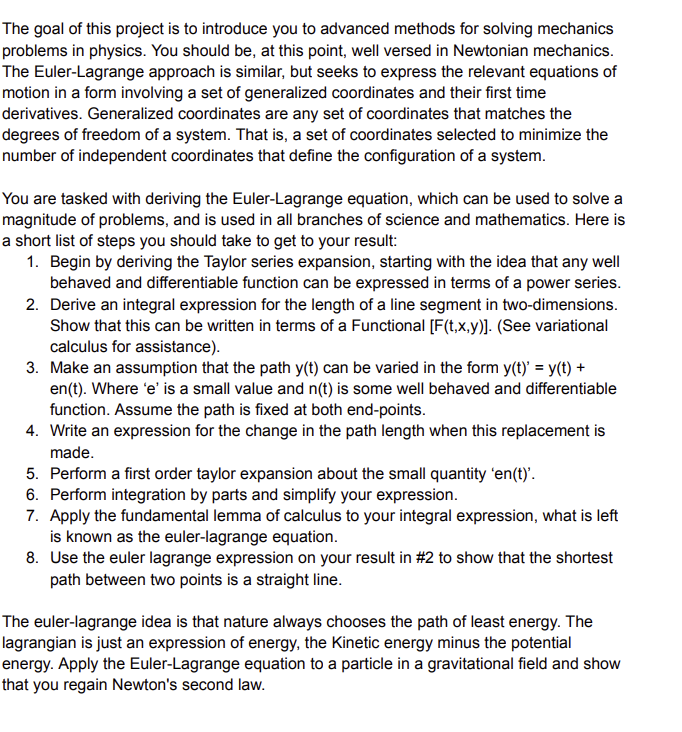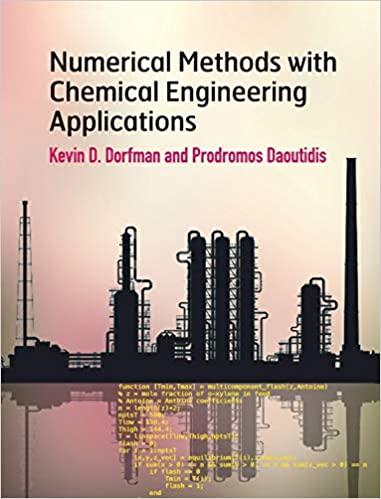Answered step by step
Verified Expert Solution
Question
1 Approved Answer
The goal of this project is to introduce you to advanced methods for solving mechanics problems in physics. You should be, at this point,

The goal of this project is to introduce you to advanced methods for solving mechanics problems in physics. You should be, at this point, well versed in Newtonian mechanics. The Euler-Lagrange approach is similar, but seeks to express the relevant equations of motion in a form involving a set of generalized coordinates and their first time derivatives. Generalized coordinates are any set of coordinates that matches the degrees of freedom of a system. That is, a set of coordinates selected to minimize the number of independent coordinates that define the configuration of a system. You are tasked with deriving the Euler-Lagrange equation, which can be used to solve a magnitude of problems, and is used in all branches of science and mathematics. Here is a short list of steps you should take to get to your result: 1. Begin by deriving the Taylor series expansion, starting with the idea that any well behaved and differentiable function can be expressed in terms of a power series. 2. Derive an integral expression for the length of a line segment in two-dimensions. Show that this can be written in terms of a Functional [F(t,x,y)]. (See variational calculus for assistance). 3. Make an assumption that the path y(t) can be varied in the form y(t)' = y(t) + en(t). Where 'e' is a small value and n(t) is some well behaved and differentiable function. Assume the path is fixed at both end-points. 4. Write an expression for the change in the path length when this replacement is made. 5. Perform a first order taylor expansion about the small quantity 'en(t)'. 6. Perform integration by parts and simplify your expression. 7. Apply the fundamental lemma of calculus to your integral expression, what is left is known as the euler-lagrange equation. 8. Use the euler lagrange expression on your result in #2 to show that the shortest path between two points is a straight line. The euler-lagrange idea is that nature always chooses the path of least energy. The lagrangian is just an expression of energy, the Kinetic energy minus the potential energy. Apply the Euler-Lagrange equation to a particle in a gravitational field and show that you regain Newton's second law.
Step by Step Solution
There are 3 Steps involved in it
Step: 1

Get Instant Access to Expert-Tailored Solutions
See step-by-step solutions with expert insights and AI powered tools for academic success
Step: 2

Step: 3

Ace Your Homework with AI
Get the answers you need in no time with our AI-driven, step-by-step assistance
Get Started


